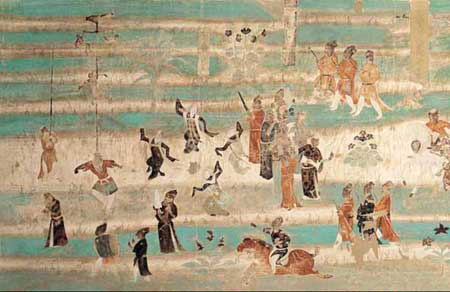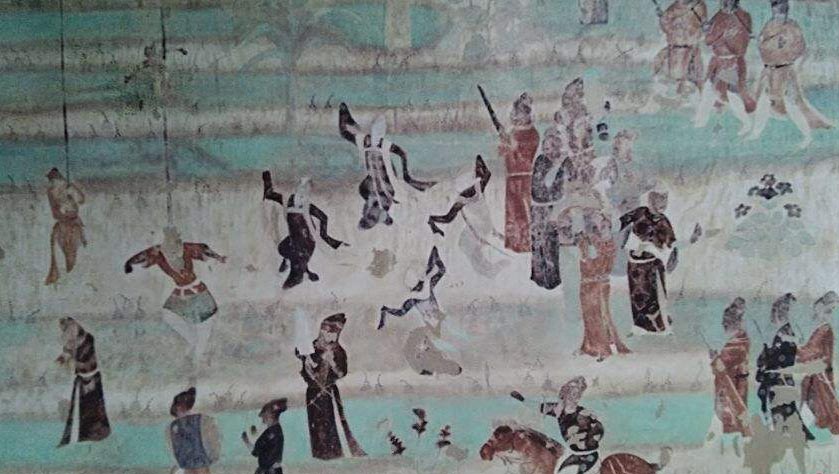The Acrobatic Theme Show and Its Origins in the”Hundred Entertainments” Introduction
2 min readDetail of acrobats in
Eastern Han Dynasty (25-220 AD) carving
What is acrobatics? In a nutshell, acrobatics is a unique performing art that is based on developing and displaying extraordinary physical skills. Although acrobatics is sometimes referred to as a type of dance, the two art forms are actually quite different. Dance uses movement to express emotions and ideas, while acrobatics strives to maximize the fascinating physical potential of the human body.

Acrobatics also differs from sports, in that it relies on artistic performance rather than athletic prowess to enthrall its audience. Acrobatics transcends the narrow definition of physical stunts, employinga wide range of skills and techniques that run the gamut from conjuring and animal training to comedy, vocal imitation, puppetry, and shadow projection. This is why acrobatics was known in ancient China as “feats of the strange and wonderful”or the “Hundred Entertainments.”
Acrobatics is an ancient art form that has its origins in the dawn of human labor. As humanity devel-oped and refined the skills of production, specialized techniques initially utilized in work, ritual, and recreation gradually evolved into the entertainment that we know today as acrobatics. Although ac-robatics originated from the common activities of everyday life, it matured into a distinctive art form that embodies the ultimate in human physical challenge. As one of China’s most ancient traditional art forms, acrobatics is inseparable from China’s long and vibrant cultural tradition. Acrobatic “feats of the strange and wonderful,”or conjuring acts, had appeared by the time of the Xia Dynasty(c.22nd-17th century BC), more than 3,600 years ago. By the Qin (221-206 BC) and Han(206 BC-220 AD) Dynasties, acrobatics had developed into a comprehensive art form popular among both royalty and commoners.

Acrobatics was also the earliest performing art to be used in cultural exchanges between China and foreign countries. Emperor Han Wudi of the Han Dynasty(reigned 140-87 BC) was the first rulerto present acrobatics at a state function. It is recorded that in 108 BC he entertained emissaries from the Western Regions(including present-day Xinjiang and parts of Central Asia) with an opulent banquet that featured not only “pools of wine and forests of meat,”but also a spectacular performance of the”Hundred Entertainments.”
Chinese acrobatics, with a history spanning more than 3,000 years, has had its share of ups and downs.
But only in the last fifty or so years has it truly come into its own. If the book succeeds in providing you with an initial understanding of Chinese acrobatics, we will be satisfied that we have achieved our goal.








